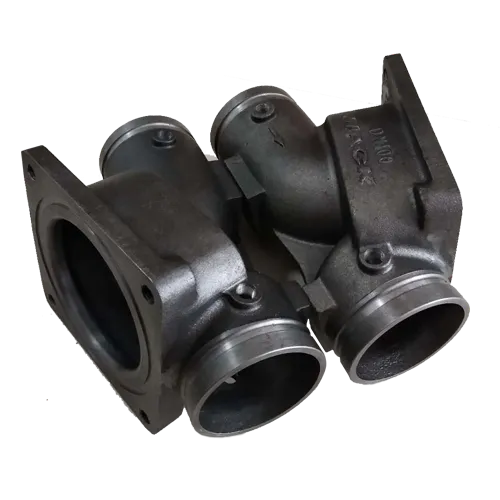Mobile:+86-311-808-126-83
Email:info@ydcastings.com
Connecting Cast Iron Sewer Pipes for Optimal Drainage Solutions and Installation Techniques
Understanding Cast Iron Sewer Pipe Connections
Cast iron sewer pipes have been a staple in plumbing systems for over a century, known for their durability, strength, and resistance to harsh environmental conditions. As cities expand and infrastructure ages, the importance of understanding proper connections and installation techniques for cast iron sewer pipes becomes crucial to ensure longevity and functionality of sewage systems.
The Basics of Cast Iron Pipes
Cast iron pipes are made from molten iron poured into molds, giving them a dense and robust structure. Due to their high tensile strength, they can withstand significant pressure and resist deformation, making them ideal for underground sewer applications. Furthermore, cast iron has excellent noise-dampening properties, which is an added benefit in residential areas where loud sewage systems can be a nuisance.
Connection Methods
When it comes to connecting cast iron pipes, there are several methods. The most traditional approach involves using a hub and spigot configuration. In this system, one end of the pipe has a bell-shaped hub that fits over the spigot end of another pipe. A lead or rubber gasket can be used to create a watertight seal. This method has been used for decades and remains popular due to its reliability.
Another modern connection technique involves the use of no-hub or soil pipe couplings. These couplings are made from a combination of cast iron and flexible rubber, allowing for easier installation and making it simpler to connect multiple pipes at odd angles. No-hub connections are particularly beneficial in retrofitting older systems where adjustment and flexibility are necessary.
Installation Considerations
Proper installation is vital to the performance of cast iron sewer pipes. It is essential to ensure that connections are made correctly to avoid leaks and subsequent damage. Here are several key considerations
cast iron sewer pipe connections

1. Alignment Pipes should be aligned correctly to ensure a seamless flow of wastewater. Misalignment can lead to backups and increased pressure on the joints.
2. Support and Anchoring Cast iron pipes are heavy, and adequate support must be provided to hold them securely. Insufficient support can lead to sagging and eventual breakage.
3. Sealant Application When using rubber gaskets, it’s important to ensure that they are properly seated and that any sealant applied is compatible with both the rubber and the cast iron to avoid chemical reactions that may degrade the materials.
4. Thermal Expansion Cast iron can expand and contract with temperature changes. Providing expansion joints where necessary can prevent cracking and other damage due to thermal stress.
Common Issues and Solutions
Despite their robustness, cast iron sewer pipe connections can encounter problems over time. One of the most common issues is corrosion, particularly in environments where metal is exposed to moisture and pollutants. Regular inspections can help identify signs of corrosion before they escalate into major problems.
Another issue is the infiltration of tree roots, which may breach the joints and lead to blockages. Using root barriers and maintaining a safe distance between trees and sewer lines can mitigate this risk.
Conclusion
Cast iron sewer pipe connections play a fundamental role in maintaining efficient waste removal systems. Understanding the different methods of connection and the considerations during installation is vital for homeowners, plumbers, and contractors alike. By adhering to best practices, utilizing proper materials, and conducting regular maintenance, the longevity of cast iron sewer systems can be significantly enhanced, ensuring they continue to serve communities effectively for years to come. Whether embarking on a new construction project or renovating an existing system, attention to detail in the connection of cast iron sewer pipes is essential in building a solid and durable foundation for efficient wastewater management.
-
Why Should You Invest in Superior Pump Castings for Your Equipment?NewsJun.09,2025
-
Unlock Performance Potential with Stainless Impellers and Aluminum End CapsNewsJun.09,2025
-
Revolutionize Your Machinery with Superior Cast Iron and Aluminum ComponentsNewsJun.09,2025
-
Revolutionize Fluid Dynamics with Premium Pump ComponentsNewsJun.09,2025
-
Optimizing Industrial Systems with Essential Valve ComponentsNewsJun.09,2025
-
Elevate Grid Efficiency with High-Precision Power CastingsNewsJun.09,2025











